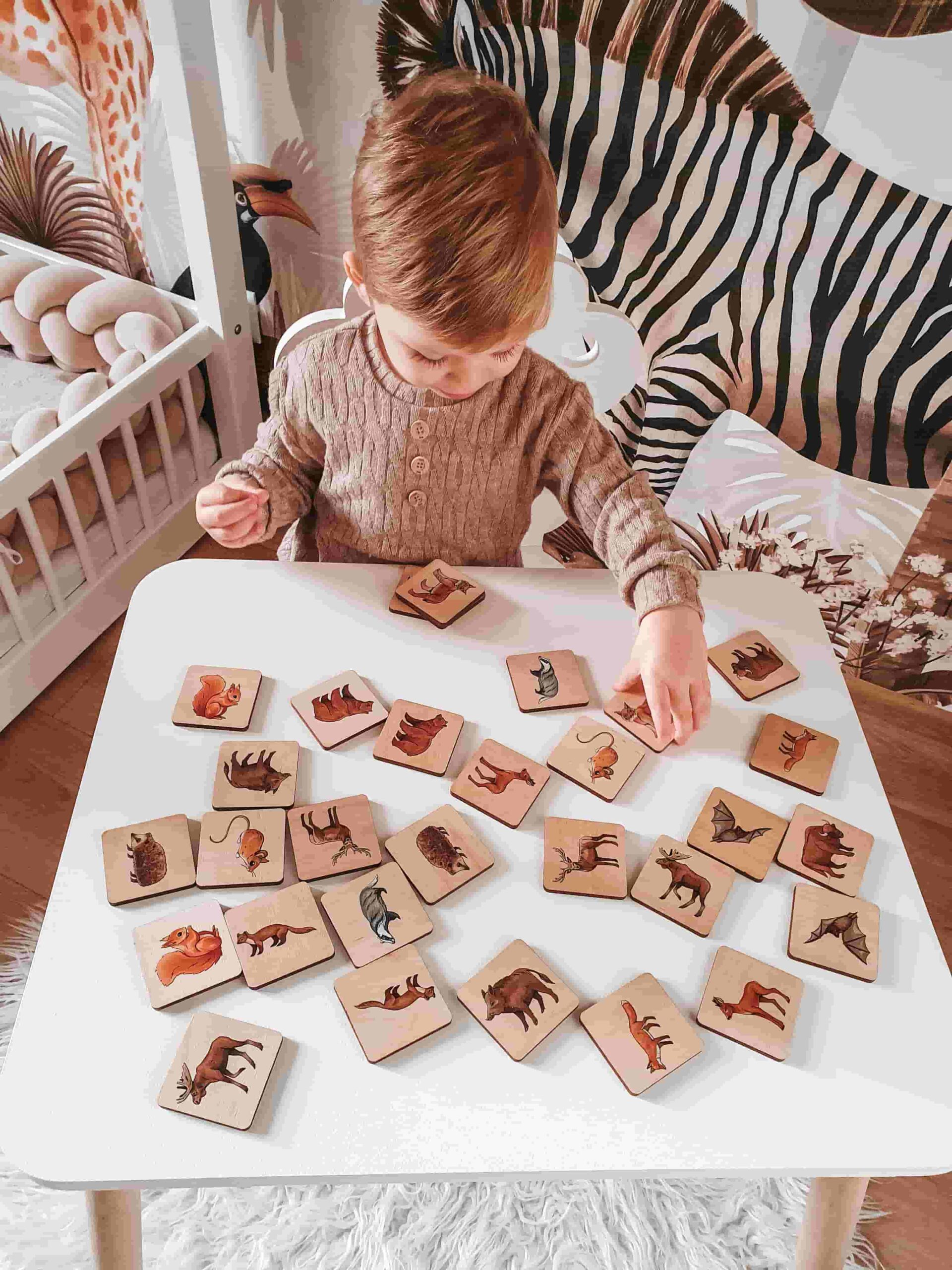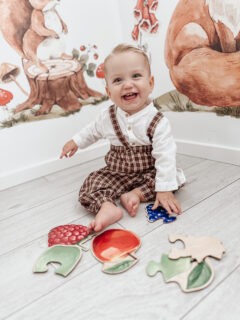Wooden memory game – Animals from Polish forests with educational cards
119.00 zł
Touch System
ReadMammals of Polish Forests is an educational game, consisting of 15 pairs of wooden memorials with our original graphics. Among the illustrated species are well-known ones like roe deer and wild boar, as well as rarer ones like lynx and badger.
Forestry education in your home? Why not! Complementing the memorials are educational cards, which collect the most important information about each animal. Did you know that the mating season of deer is the roaring season (this is when the loud roars of males can be heard in the forest wanting to please the doe and scare away competitors), and the western mop, which is a representative of bats, uses echolocation (that is, it sends out ultrasonic sounds that are inaudible to humans) during flight? Time to discover the fascinating world of mammals and observe in the field the species we present.
Supporting children’s development through play, as encouraged by the Montessori method, allows them to acquire knowledge in a particular area, as well as to train the necessary skills. Social competence, language skills or the ability to learn are very important for any toddler. How do you play wisely with your child? You’ll find the answers to this question in the 5 suggested play scenarios included with our memorials. When creating game proposals, we tried to make the toy grow with the child, to be attractive both for a 3-year-old and for children already going to school.
The memory game helps to shape, in particular: concentration, memory, visual perception, eye-hand coordination, and speech and communication. Did you know that:
- Concentration is the ability to focus on something specific. It can be a task being performed, a particular object or instructions given by a teacher. Concentration ensures children’s proper development and is essential at each stage of their education.
- The mind of a young child is like a sponge. Several-year-olds absorb a lot of new words and information in no time at all, which allows them to familiarise themselves with their surroundings. In order for this process to run smoothly, continuous memory training is essential.
- Visual perception allows children to get to know and understand the world around them. It is also essential for further education when learning to read, write and count. At first, the child, playing with several pieces with different pictures, has to focus his eyes on them and make judgments about what he sees, such as colors, shapes, similarities and differences. This is an introduction to more advanced analysis, which, among other things, forms the basis for logical thinking.
- Visuomotor coordination enables precision of movement. It is essential for everyday activities – from independent eating or dressing up, drawing or writing to physical activity. Eye-hand coordination additionally requires training of the child’s hands and fingers, i.e. fine motor skills.
- Speech and effective communication are the basis of everyday life in the family and are indispensable for the development of social skills. They allow children to express their thoughts and feelings and to understand what others want to communicate.
Previous lowest price was 119.00 zł.
Fun proposal
Animals in line, or left hemisphere puzzles – number of players: 2, suggested age: 3+
The aim of the game is for the child to reproduce the array of animals that has been arranged by the caregiver. Choose the animals you will arrange, you will need pairs – one picture of a particular mammal gets a child, the other an adult. Arrange the pattern for the child to repeat, which is animals in a horizontal row. The mapped animal train is to be underneath.
Tips:
- the level of difficulty of the game is modified by increasing the number of elements used; for the youngest children (2 years old) use 2 animals, 3-4 years old let them start their adventure with mapping the order of 2-4 elements;
- Increase the number of memorials gradually as the child masters arranging sequences from fewer pieces;
- Keep an eye on the child to make sure that the order is always mapped from left to right and that the child arranges the pictures in sequence, not randomly;
- Advanced toddlers can be offered to map out the order of animals arranged in several rows; keep an eye on the child to arrange the rows from top to bottom, left to right.
For more play ideas, see the booklet accompanying the toy or visit our Facebook and Instagram pages.






